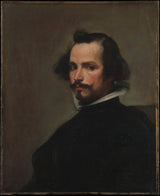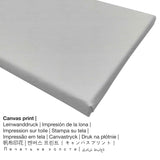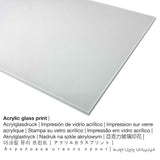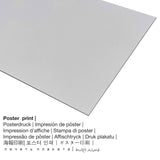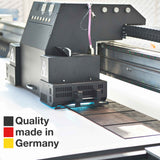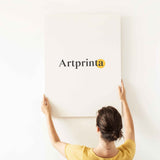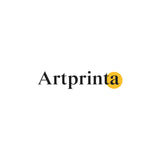Velázquez, 1650 - Eserese nke nwoke - mbipụta nka mara mma
Ụtụ gụnyere. Mbupu gbakọrọ na ndenye ọpụpụ.
In 1650 Velazquez mere nka ochie eserese akpọrọ Eserese nke nwoke. The 370 year-old piece of art was made with the size: 27 1/4 x 22 1/4 in (69,2 x 56,5 cm) and was painted with the techinque of mmanụ na kwaaji. N'ịga n'ihu, a na-etinye akụkụ nka ahụ n'ime Ụlọ ihe ngosi nka nke Metropolitan art collection, which is one of the world's largest and finest art museums, which includes more than two million works of art spanning five thousand years of world culture, from prehistory to the present and from every part of the globe.. With courtesy of: The Metropolitan Museum of Art, New York, Marquand Collection, Gift of Henry G. Marquand, 1889 (nwere ikike - ngalaba ọha). The creditline of the artwork is the following: Marquand Collection, Gift of Henry G. Marquand, 1889. Further, the alignment is in Eserese format na akụkụ ruru nke 1: 1.2, nke pụtara na ogologo bụ 20% mkpụmkpụ karịa obosara.
Nkọwapụta nka nka mbụ sitere na ụlọ ngosi nka (© Nwebiisinka - The Metropolitan Museum of Art - Museumlọ ihe ngosi nka nke Obodo)
The identity of this reserved sitter, who seems warily to assess us with a sidelong glance, is unknown and the attribution to Velázquez has been much disputed. A reconsideration based on a detailed technical examination suggests that it may have been painted in Rome by Velázquez at the same time as the portrait of the artist’s enslaved assistant, Juan de Pareja. In Rome, Velázquez portrayed people of various ranks and professions, ranging from the pope and cardinals to the pope’s barber and people such as Juan de Córdoba, who aided Velázquez in the purchase of works of art for the Spanish royal collection.
Ozi ndabere ọrụ nka
| Aha nka nka: | "Ihe osise nke nwoke" |
| Nhazi nka: | sere |
| Nhazi nka: | nka ochie |
| Nhazi oge: | 17th narị afọ |
| Emepụtara n'afọ: | 1650 |
| Afọ nka: | 370 afọ |
| Usoro nka izizi: | mmanụ na kwaaji |
| Akụkụ izizi (ọrụ nka): | 27 1/4 x 22 1/4 na (69,2 x 56,5 cm) |
| Ụlọ ihe ngosi nka / mkpokọta: | Museumlọ ihe ngosi nka nke Obodo |
| Ebe ngosi nka: | New York City, New York, Njikota Obodo Amerika |
| Weebụsaịtị ihe ngosi nka: | Museumlọ ihe ngosi nka nke Obodo |
| Ụdị nka nka: | ngalaba ọha |
| Site n'aka: | Ụlọ ihe ngosi nka nke Metropolitan, New York, mkpokọta Marquand, Onyinye Henry G. Marquand, 1889 |
| kreditline ọrụ nka: | Mkpokọta Marquand, Onyinye nke Henry G. Marquand, 1889 |
Tebụl nchịkọta ihe nkiri
| Ihe nkiri: | Velazquez |
| okike nke onye nka: | nwoke |
| Nationality: | spanish |
| Ọrụ nke onye na-ese ihe: | onye na-ese ihe |
| Mba onye si: | Spain |
| Nhazi nke onye nka: | nna ukwu ochie |
| Nwụrụ anwụ: | 61 afọ |
| Afọ ọmụmụ: | 1599 |
| Nwuru: | 1660 |
Ngwa ngwaahịa dị
Ndepụta ndetu ngwaahịa na-enye gị ohere ịhọrọ ngwa na nha nke nhọrọ gị. Nhọrọ ndị a dị maka n'otu n'otu:
- Mbipụta ọla (aluminium dibbond): An Aluminium Dibond print is a print material with an outstanding effect of depth. The Direct Print on Aluminum Dibond is the excellent start to fine art replicas manufactured with aluminum. For your Aluminium Dibond print, we print your chosen artpiece right on the surface of the white-primed aluminum composite.
- Mbipụta kwaaji: The UV printed canvas material applied on a wood frame. The great advantage of canvas prints is that they are relatively low in weight, which means that it is easy and straightforward to hang up the Canvas print without extra wall-mounts. Hence, a canvas print is suited for any kind of wall.
- Akwụkwọ mmado ebipụtara (ihe kwaaji): The Artprinta poster print is a UV printed sheet of canvas with a slight surface finish. Please keep in mind, that depending on the size of the poster we add a white margin of something between 2-6cm around the work of art, which facilitates the framing with your custom frame.
- Ugogbe acrylic ebipụtara: The acrylic glass print, which is sometimes referred to as a plexiglass print, makes the artwork into home decoration. The work of art is custom-made with modern UV direct printing machines. This creates the effect of stunning, vibrant colors.
Banyere akụkọ
| Nkewa ngwaahịa: | ezi nka mmeputakwa |
| Mmeputakwa: | dijitalụ mmeputakwa |
| Usoro nhazi: | mbipụta dijitalụ (Mbipụta UV ozugbo) |
| Ihe ngosi: | German mere |
| Ụdị ngwaahịa: | na mmepụta ihe |
| Eji ngwaahịa emebere: | Ụlọ ihe osise nka, foto mgbidi |
| Ntuziaka onyonyo: | nhazi ihe osise |
| Oke akụkụ: | ogologo ruo obosara 1: 1.2 |
| Ntụgharị nkọwa akụkụ onyonyo: | ogologo bụ 20% mkpụmkpụ karịa obosara |
| Akụrụngwa dị: | ígwè ebipụta (aluminium dibond), acrylic glass print (nwere ezigbo mkpuchi iko), mbipụta akwụkwọ mmado (akwụkwọ kwaaji), akwụkwọ akwa akwa. |
| Kanvas n'elu etiti ihe ndọtị (mbipụta akwa akwa): | 50x60cm - 20x24", 100x120cm - 39x47", 150x180cm - 59x71" |
| Mbipụta iko acrylic (nwere ezigbo mkpuchi iko) dị iche iche: | 50x60cm - 20x24", 100x120cm - 39x47" |
| Mpempe akwụkwọ mmado (akwụkwọ kwaaji) nha: | 50x60cm - 20x24", 100x120cm - 39x47" |
| Aluminium dibond ebipụta (ihe aluminium) nha dị iche iche: | 50x60cm - 20x24", 100x120cm - 39x47" |
| Igwe onyonyo: | enweghị etiti |
Ihe dị mkpa: We try the best we can to describe our art products with as many details as possible and to exhibit them visually on the different product detail pages. Nevertheless, the tone of the printing material and the print result may vary slightly from the presentation on the device's screen. Depending on the screen settings and the quality of the surface, not all colors will be printed 100% realistically. Given that all are processed and printed manually, there may as well be minor discrepancies in the exact position and the size of the motif.
© Nwebiisinka - ikike ọgụgụ isi nke - Artprinta.com (Artprinta)

